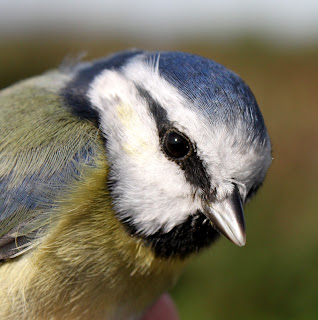This hobby of mine is about taking every available opportunity to grab the camera, head off birding or plan a ringing session, especially so during the historic wet and windy winter of 2015/16. Yet again Sunday’s weather forecast looked likely to sabotage any chance of a birding or ringing session in the week ahead as tightly packed isobars drew ever decreasing circles on the charts.
Then late on Sunday afternoon a window of light winds and zero rain opened up in the centre of the low pressure system sitting directly over Oakenclough. I sent a text to Andy - Ringing 0800? A message came right back. Andy was game.
It proved to be a good decision when our four hour session produced a respectable total of 66 birds, but for us, an unusually high number of recaptures. We had 28 new birds comprising 9 Chaffinch, 7 Goldfinch, 1 Siskin, 7 Blue Tit and 4 Coal Tit. The single Siskin caught was an adult female in fine condition.
Siskin
Goldfinch
The remaining 38 recaptures were made up of 3 Goldfinch, 2 Chaffinch, 10 Coal Tit, 11 Blue Tit, 10 Great Tit and 2 Dunnock.
Chaffinch
The unusually high numbers of recaptures of the tit family in the last two visits here suggest that the mild winter of zero frosts and nil snowfall has allowed many birds to survive, individuals which might otherwise have perished. Additionally today we noted that a nearby house which normally has full bird feeders had allowed the said feeders to become empty and to lead more birds to visit our own feeding station where we prefer that the Nyger feeders catch finches only. Our objectives of ringing at Oakenclough include catching good numbers of finches and if possible to avoid catching large numbers of the titmice family, an aim realised to good effect since recommencing ringing at the site in late 2104.
Hopefully the tits will leave the immediate area soon and allow us to concentrate on catching migrant Siskins and Lesser Redpolls, not to mention the newly arrived warblers of the burgeoning Spring.
Blue Tit
Coal Tit
Dunnock
Back home I noted an increase in garden Goldfinches, Blackbirds on territory and Great Tits taking an interest in a nest box. Things are looking up.
Linking today to Stewart's World Bird Wednesday in Australia.
Linking today to Stewart's World Bird Wednesday in Australia.



















































































